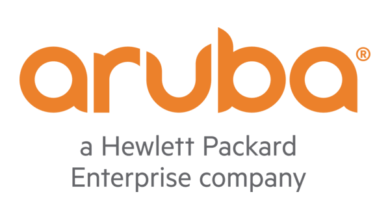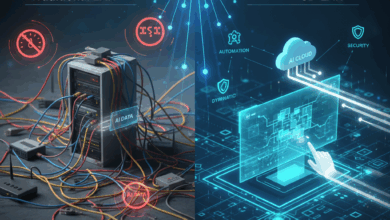Integrating SD-WAN with Zero Trust Architecture
How combining SD-WAN with Zero Trust principles creates a secure, flexible network architecture for today’s distributed workforce.
If you’re in IT or network architecture, you’ve probably heard this phrase a hundred times by now:
“Trust no one. Always verify.”
That’s the heart of Zero Trust—and for good reason. As workforces become more mobile, apps move to the cloud, and threats evolve faster than ever, the traditional perimeter-based security model just doesn’t cut it anymore.
But how does SD-WAN—a solution designed to simplify and optimize wide-area networks—fit into this new way of thinking?
In this article, we’ll explore how SD-WAN and Zero Trust can work together to build a smarter, safer, and more resilient network. No jargon. No fluff. Just real-world insights.
SD-WAN Smart Backbone of Modern Networking
Before we dive into Zero Trust, let’s get clear on what SD-WAN really is.
Software-Defined Wide Area Networking (SD-WAN) is a technology that helps organisations to achieve a range of outcomes.
- Connect multiple branches and data centers,
- Use broadband or LTE as alternatives to expensive MPLS circuits,
- And dynamically route traffic based on real-time network conditions.
And it’s fast. It’s flexible and it’s built for the cloud era.
But here’s the thing—SD-WAN wasn’t designed with Zero Trust in mind.
That means without the right security layer, it can become a potential weak point in your network. Let’s take a look at how this play out.
Zero Trust Shift from Perimeter to Identity
The Zero Trust model flips traditional security on its head.
Instead of assuming that anything inside the network is safe, Zero Trust says:
“Every user, device, and connection must be authenticated and continuously verified—no matter where they are.”
In practice, this means:
-
Micro-segmentation of network access
-
Strong identity and access management (IAM)
-
Least-privilege access policies
-
Real-time monitoring and analytics
This model is ideal for today’s hybrid, cloud-first environments—but it needs a reliable and intelligent network layer to make it work.
That’s where SD-WAN comes back in.
Where SD-WAN and Zero Trust Meet
Now let’s connect the dots.
When implemented correctly, SD-WAN and Zero Trust can work hand-in-hand to deliver:
-
Secure access to cloud apps and internal resources
-
Improved visibility into traffic and user behavior
-
Policy-based control over who can access what, and from where
Here’s how the two complement each other:
1. Identity-Aware Routing
Zero Trust emphasises identity-based access. SD-WAN can enforce routing decisions based on user identity, role, device posture, or application risk level.
2. Secure Connectivity Across All Edges
Whether it’s a branch office, a remote worker, or a cloud workload—SD-WAN creates secure tunnels (using IPSec or SSL) between them. So, combine that with Zero Trust principles, and you ensure only authorised, authenticated connections are established.
3. Micro-Segmentation at Scale
Traditional networks treat all traffic equally once inside the firewall. With Zero Trust, that’s a huge risk. SD-WAN allows micro-segmentation by creating secure zones that only allow specific traffic, making lateral movement by attackers much harder.
4. Centralised Policy Management
SD-WAN platforms give you the ability to manage policies from a single pane of glass. When aligned with Zero Trust, these policies can enforce who gets access, to what, and under what conditions—based on real-time context.
Benefits of Integrating SD-WAN with Zero Trust
Why bother combining these two approaches? Because together, they solve problems neither can fully tackle alone.
Let’s take a look at what organisations could gain whe integrating SD-WAN with Zero Trust.
- End-to-End Security where every edge connection is encrypted, verified, and controlled.
- Simplified Management with centralised orchestration of policies, security, and connectivity.
- Reduced Attack Surface with least-privilege access means fewer ways for attackers to get in.
- Improved Performance for intelligent routing ensures users get the fastest path to their apps.
- Future-Ready Architecture that is built for cloud, mobile, and remote-first environments.
Challenges to Watch Out For
Of course, no solution is perfect. Here are some things to keep in mind:
-
Not All SD-WANs Are Created Equal. Some vendors bolt on security as an afterthought. Look for platforms with native Zero Trust support or strong integrations (think SASE).
-
Policy Complexity within Zero Trust requires detailed policies that can get hard to manage without automation.
-
User Experience is important. Over-securing can cause friction. Balance security with usability.
Best Practices for Implementation
Thinking of moving forward with SD-WAN and Zero Trust together? Let’s take a look at how to get started.
1. Assess Your Current Network
Map out your existing WAN architecture, traffic flows, and security policies. Identify high-risk areas.
2. Adopt an Identity-First Mindset
Build policies based on user identity, device trust level, and application sensitivity—not just IP addresses.
3. Choose the Right Vendor
Here’s a few key pointers on what to look for in SD-WAN platforms. Ultimately, the decision needs to be made in the context of your organisations.
-
Offer built-in security features
-
Support Zero Trust Network Access (ZTNA)
-
Integrate with your IAM and SIEM tools
4. Start Small, Then Scale
Begin with a few branches or users. Test policies. Monitor performance and iterate before scaling network-wide.
A Smarter, Safer Network Starts Here
In a world where cyber threats are evolving and users are everywhere, SD-WAN and Zero Trust aren’t just nice to have—they’re necessary.
SD-WAN gives your network the flexibility it needs. Zero Trust gives it the protection it deserves.
Together, they form the foundation of a modern, secure, and future-proof IT strategy.
So if you’re still thinking of SD-WAN purely in terms of bandwidth or cost savings—it’s time to rethink. The next-gen network is not just fast. It’s Zero Trust secure.



